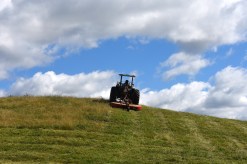Top 5 Items Every OSHA Compliance Forklift Checklist Must Include
Ensuring OSHA compliance when operating forklifts is crucial for workplace safety and preventing costly accidents. A well-structured forklift checklist can help operators and supervisors maintain equipment properly and adhere to safety regulations. In this article, we will explore the top five items that every OSHA compliance forklift checklist must include to keep your work environment safe and efficient.
Pre-Operation Inspection
Before using a forklift, conducting a thorough pre-operation inspection is essential. This includes checking tires for wear or damage, inspecting forks for cracks or bends, verifying that all controls are functioning correctly, examining the mast and chains for defects, and ensuring safety devices like lights and alarms are operational. Documenting these checks helps identify potential hazards early on.
Proper Operator Certification Verification
OSHA mandates that only certified operators handle forklifts. Your checklist should verify that each operator has completed the required training and holds a valid certification. Keeping records of operator qualifications not only ensures compliance but also promotes accountability in handling equipment responsibly.
Safe Load Handling Procedures
A key aspect of forklift safety involves managing loads correctly. The checklist should include steps to confirm that loads do not exceed the forklift’s rated capacity, are stable and centered on the forks, and are secured properly during transportation. Adhering to these procedures minimizes the risk of tip-overs or dropped materials.
Daily Maintenance Checks
Regular maintenance helps prevent mechanical failures that could lead to accidents or downtime. A daily maintenance section in your checklist should cover oil levels, battery charge status (for electric forklifts), brake functionality, steering response, horn operation, and any visible leaks or unusual noises from the engine area.
Environmental Safety Assessment
The work environment impacts forklift operation significantly. Your OSHA compliance checklist should include an assessment of floor conditions (checking for spills or debris), adequate lighting in operating areas, clear signage around hazardous zones, proper ventilation especially indoors where exhaust gases may accumulate, and verifying designated pedestrian walkways are marked clearly.
Incorporating these five critical items into your OSHA compliance forklift checklist will help maintain a safer workplace while ensuring adherence to regulatory standards. Regularly reviewing and updating your checklists encourages continuous improvement in safety practices—protecting both personnel and equipment effectively.
This text was generated using a large language model, and select text has been reviewed and moderated for purposes such as readability.





